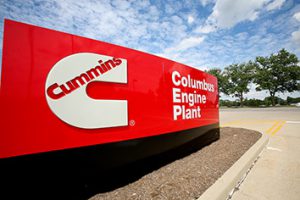Big businesses fight over Indiana energy program
Two giant corporations that sell products that save electricity want Gov. Mike Pence to veto a bill that would halt the program called Energizing Indiana.
Two giant corporations that sell products that save electricity want Gov. Mike Pence to veto a bill that would halt the program called Energizing Indiana.
Ball State University officials are preparing to stop burning coal at the campus steam plant as the school pushes ahead with its partial conversion to geothermal energy.
TThe House voted 66-30 to amend the bill with language that prohibits the Indiana Utility Regulatory Commission from extending or entering into contracts for Energizing Indiana’s statewide energy efficiency program after Dec. 31
The measure would allow industries that are Indiana's biggest energy users to pull out of the Energizing Indiana program, which provides energy-efficiency assessments and tips for saving energy and lowering utility bills.
More than one homeowner has been convinced to cut home energy bills by replacing windows or installing radiant barriers in their attic.
Indianapolis has become a more bike-friendly city, and city planners are looking to ensure the progress continues. The Metropolitan Development Commission will vote Oct. 16 on a bicycle master plan that lays out a host of educational and policy initiatives to encourage two-wheeled transportation.
Indiana’s largest power companies are set to reimburse their customers $32 million after falling short on spending for energy efficiency last year.
Other than bragging rights and a plaque on the wall, what’s the value of energy and environmental design certification for the city and taxpayers?
In a sign of the rising popularity of natural gas engines, the Indianapolis-based distributor of alcoholic beverages will make 85 of its 105 trucks run on natural gas by 2015.
IUPUI unit has ambitious plans even as namesake prepares to step down from long-held seat in Congress.
The city is guaranteed $7.5 million in savings over 15 years from a $18 million upgrade of city facilities, and the savings are expected to accumulate further.
A coalition of vegetable growers, including one from Indiana that contains Red Gold Inc., wants U.S. regulators to study the potential damage facing their fields from a new generation of herbicide-tolerant crops.
Eventually, the system will heat and cool 5.5 million square feet of buildings and save $2 million a year in operating costs.

Cummins has invested about $10 million in 70 projects in its Indiana facilities since 2007, leading to annual savings of $4 million.
Ford touts new models of electric and hybrid vehicles in seminar co-sponsored by the Greater Indiana Clean Cities Coalition, which promotes alternative fuels.
Designation to east-side project would go beyond building certification.
The Holy Grail of energy efficiency has yet to arrive, but pieces are falling into place.
Indianapolis’ movement toward installing green roofs on commercial buildings has advanced slowly but steadily, in spite of a poor economy and the availability of cheaper (at least in the short run) alternatives.
U.S. truck makers are expected to improve tractor-trailer fuel economy by about 20 percent by 2018, saving $50 billion in fuel costs over five years and decreasing carbon-dioxide emissions, President Barack Obama said.
Wind turbines, a rare sight downtown, have finally been added to The Nature Conservancy’s high-profile building on Ohio Street.